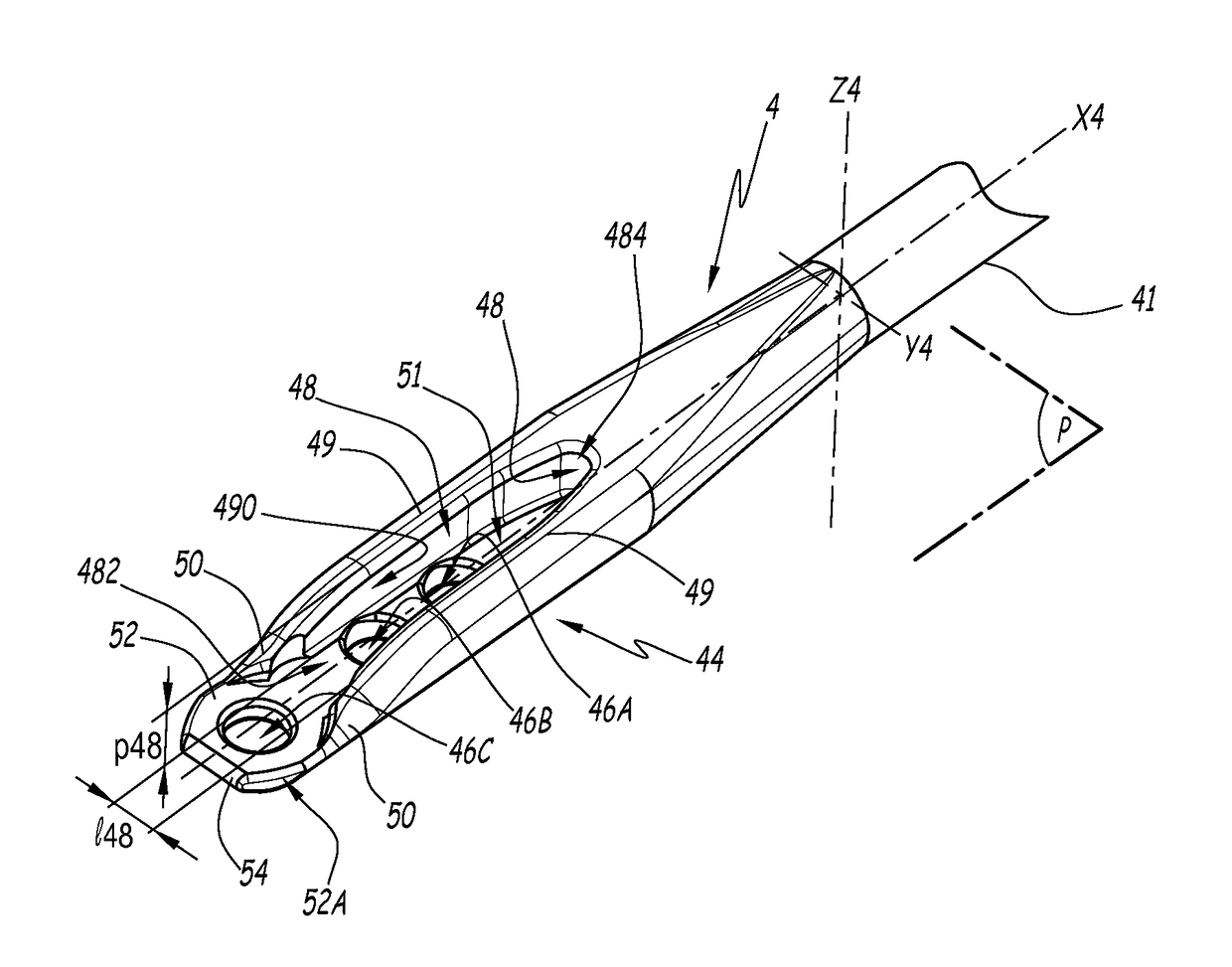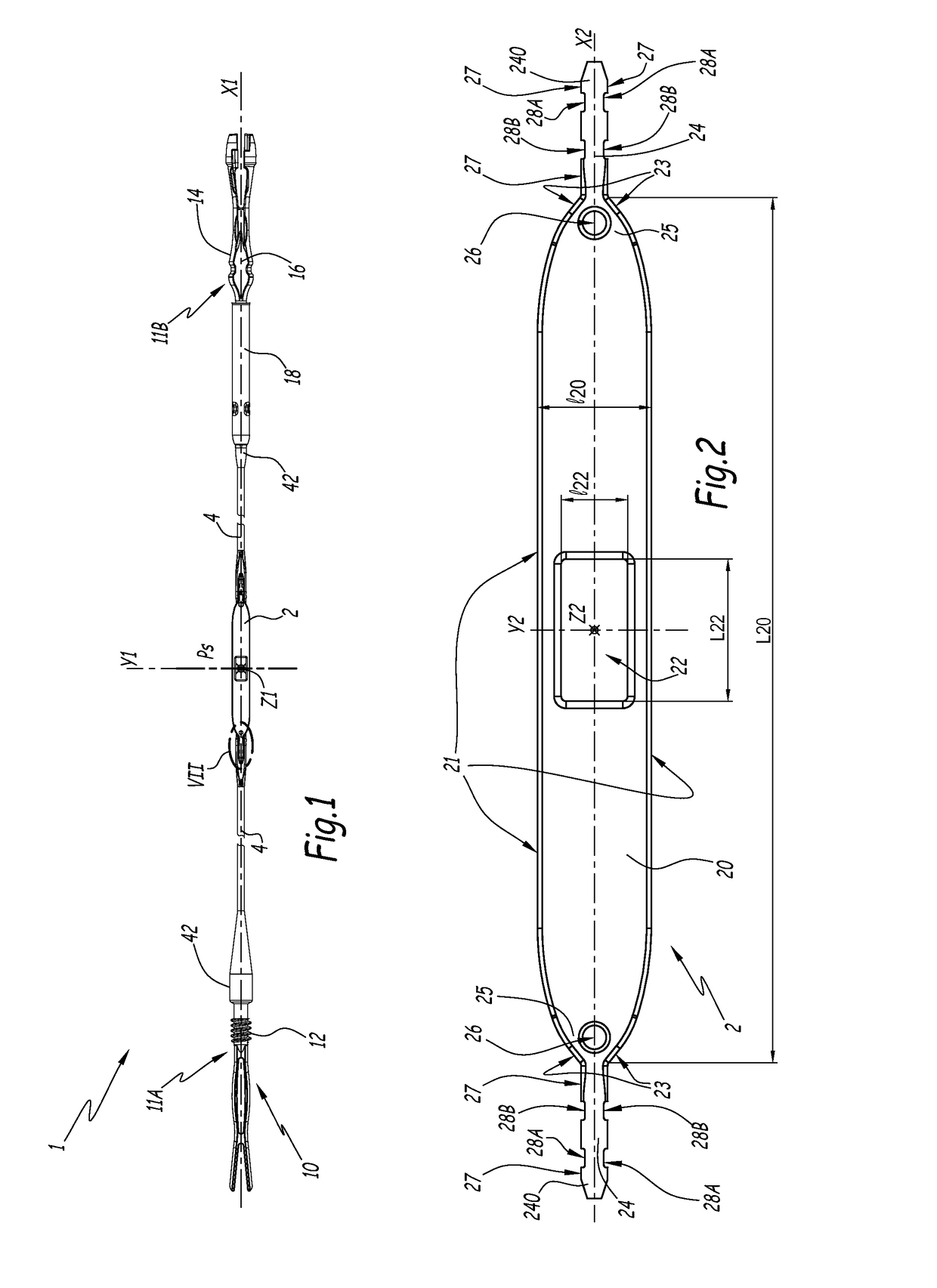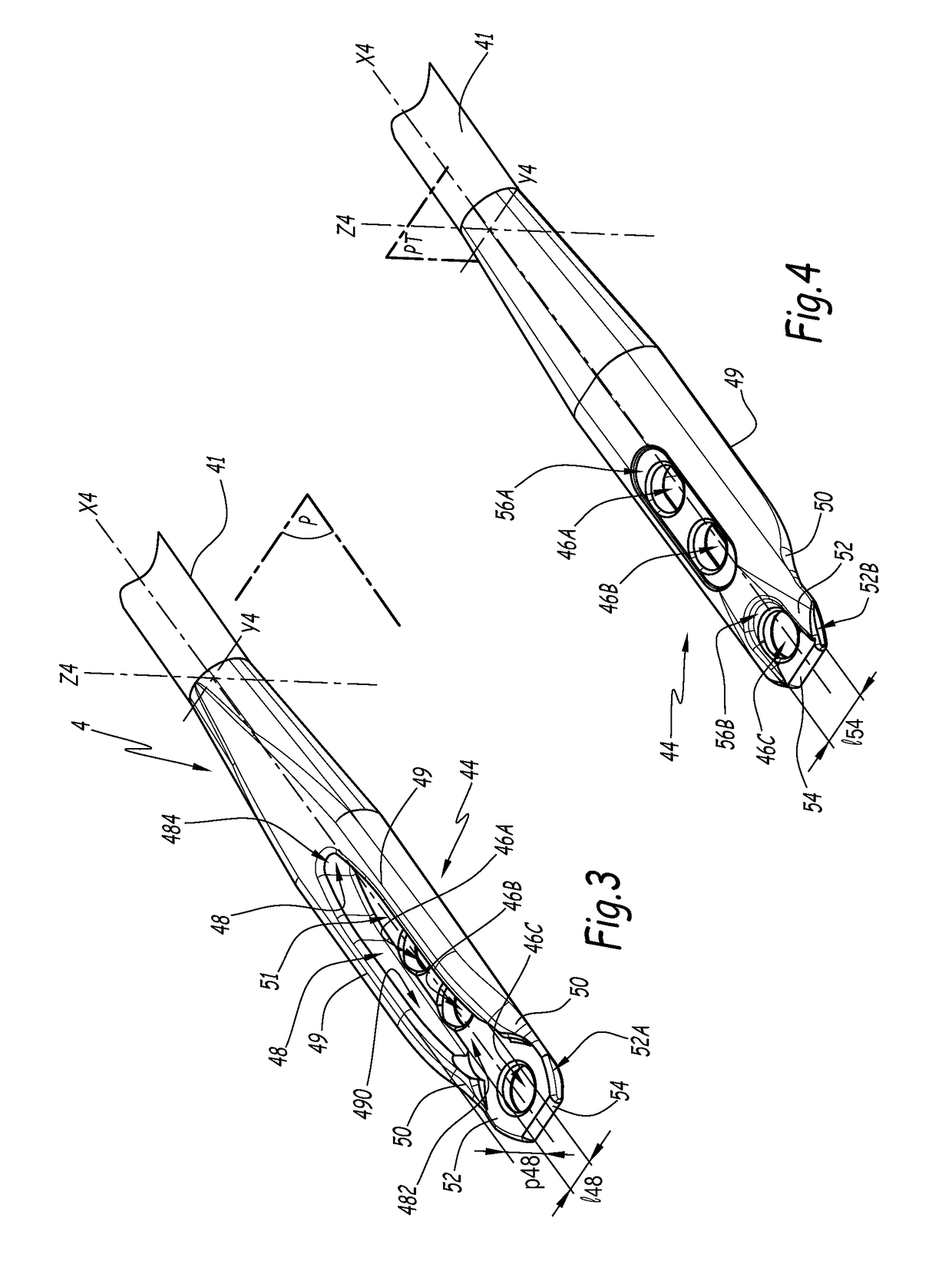Heddle for a loom and loom equipped with such a heddle
a technology of loom and loom, which is applied in the direction of weaving, textiles and papermaking, jacquard, etc., can solve the problems of limiting the residual sections of the eye, the proper distribution of the glue, and the inability to verify the thickness of the glue seam
- Summary
- Abstract
- Description
- Claims
- Application Information
AI Technical Summary
Benefits of technology
Problems solved by technology
Method used
Image
Examples
first embodiment
[0046]FIGS. 1 to 8 show a guide heddle 1 of a warp yarn for a Jacquard-type loom.
[0047]The guide heddle 1 extends lengthwise along a longitudinal axis X1 and comprises a heddle body 10 and an eye 2. The heddle body 10 includes two separate strands 4. References Y1 and Z1 denote two axes of the heddle 1, perpendicular to the axis X1, the axis Y1 corresponding to the width of the eye 2, while the transverse axis Z1 corresponds to its thickness. The guide heddle is formed by the assembly of the heddle body 10 and the eye 2.
[0048]At each end, the heddle body 10 has connecting means 11A or 11B for connecting to an element of the harness H, specifically to a spring 108 or an arch 106. At a first end of the heddle body 10, the connecting means 11A comprise an outer thread 12 that is designed to be screwed in a spring 108. At a second end of the heddle body 10, the connecting means 11B are designed to connect to an arch 106 of the Jacquard harness H. The means 11B comprise an end-piece 14 t...
second embodiment
[0095]In the second embodiment, the steel eye 1002 is symmetrical relative to the plane of symmetry PS; it includes a central portion 1020 and two tabs 1024. A main plane P of the eye 1002 corresponds to the median plane of the two surfaces 1020A and 1020B of maximum area. Each tab 1024 forms a longitudinal end of the eye 1002 and has, in the direction of the transverse axis Z1, a reduced thickness toward its free end 1240. This reduction is obtained by localized crushing of the eye 1002, which is shown by the transitional part 1242.
[0096]Reference e20 denotes the thickness of the central portion 1020 of the eye 2 measured parallel to the transverse axis Z1, and reference e24 denotes the thickness of a tab 1024 of the eye 1002 measured parallel to the transverse axis Z1, past the transition part 1242 relative to the central portion 1020. The thickness e24 is smaller than the thickness e20. The transition part 1242 is V-shaped with a flat bottom with two sides 1242A and 1242B and a c...
third embodiment
[0122]According to a first alternative of this third embodiment that is not shown, the cavity 48 is removed in each strand 4, as well as the tab 24 at each end of the central portion 20. In that case, the overlap between the parts 2 and 4 takes place only at the final portion 52, by engaging the transition zone 25 of the end of the central portion 20 in the cavity 48′, with an overlap of a single transverse side of each of the parts 2 and 4.
[0123]According to another alternative that is also not shown of this third embodiment, the pairs of housings comparable to the pairs of housings 31 to 34 of the first embodiment can extend to the closed cavity 48. In that case, housings with an appropriate shape are provided in the tabs 24 as well as in the bottom 51 and / or in the ceiling 53 and / or in the side walls 49. The housings of the tabs 24 can be notches, as in the first embodiment, or through housings with a circular section, like the housings 26 of the third embodiment.
[0124]Within the...
PUM
 Login to View More
Login to View More Abstract
Description
Claims
Application Information
 Login to View More
Login to View More - R&D
- Intellectual Property
- Life Sciences
- Materials
- Tech Scout
- Unparalleled Data Quality
- Higher Quality Content
- 60% Fewer Hallucinations
Browse by: Latest US Patents, China's latest patents, Technical Efficacy Thesaurus, Application Domain, Technology Topic, Popular Technical Reports.
© 2025 PatSnap. All rights reserved.Legal|Privacy policy|Modern Slavery Act Transparency Statement|Sitemap|About US| Contact US: help@patsnap.com



